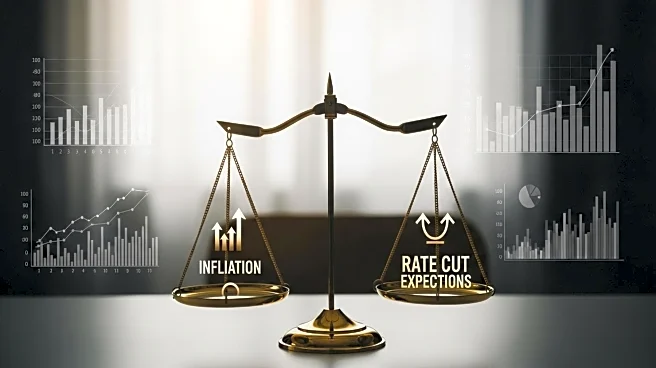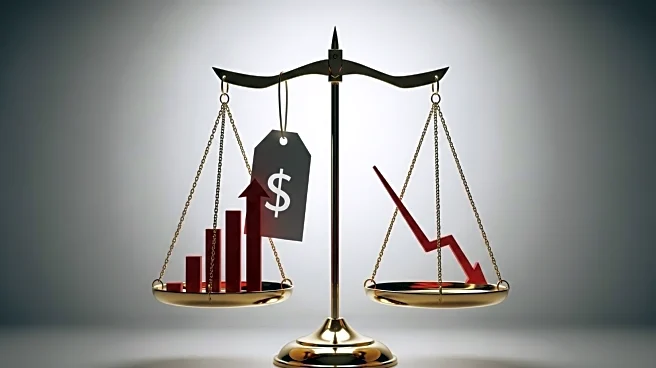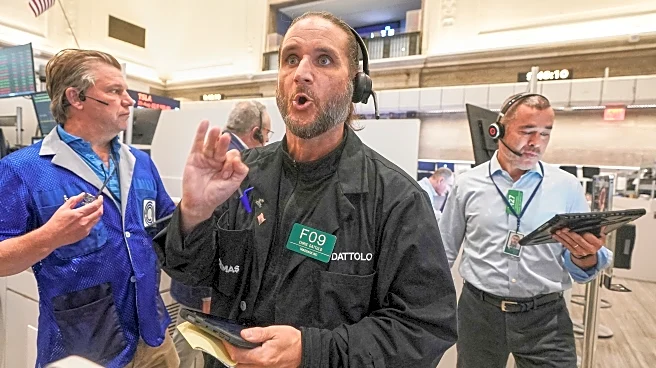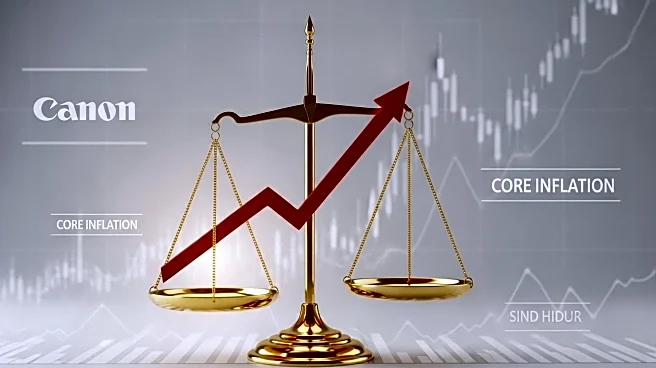What is the story about?
What's Happening?
The Federal Reserve's preferred inflation measure, the Personal Consumption Expenditures (PCE) Price Index, rose by 2.6% annually in July, according to a Commerce Department report. This increase aligns with expectations and surpasses the central bank's 2% target. Excluding food and energy, the core PCE index rose by 2.9%, indicating that tariffs on imports are beginning to affect prices. Despite these inflationary pressures, the Federal Reserve is expected to proceed with a rate cut in September, with an 84.2% probability of a 25 basis point reduction. This decision is influenced by the need to support the labor market, as highlighted by recent comments from Federal Reserve Chair Jerome Powell.
Why It's Important?
The rise in the core PCE index suggests that inflationary pressures are mounting, potentially complicating the Federal Reserve's monetary policy decisions. While inflation remains above the Fed's target, the focus on supporting the labor market may lead to a rate cut, which could lower borrowing costs for consumers and businesses. This move is significant for economic stakeholders, as it may stimulate economic activity by making loans more affordable. However, it also poses risks of further inflation if not managed carefully. The decision will impact various sectors, including housing, automotive, and consumer goods, which are sensitive to interest rate changes.
What's Next?
The Federal Reserve's upcoming meeting on September 17 will be closely watched for the official decision on interest rates. Additionally, the release of the nonfarm payrolls report next Friday will provide further insights into the labor market's health, potentially influencing future monetary policy. Stakeholders, including businesses and investors, will be monitoring these developments to adjust their strategies accordingly.
AI Generated Content
Do you find this article useful?
















